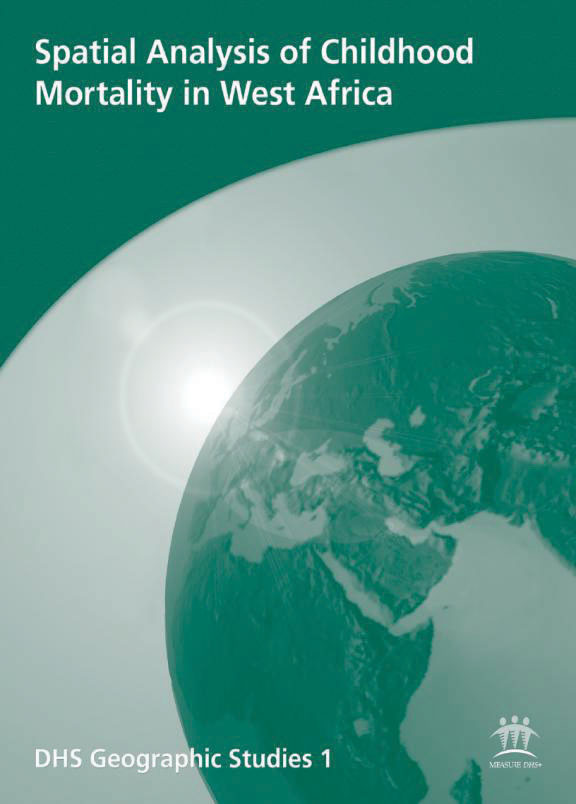- PUBLICATIONS
- JOURNAL ARTICLES
- ORDER PUBLICATIONS
Publications Summary
- Document Type
- Spatial Analysis Reports
- Publication Topic(s)
- Geographic Information, Infant and Child Mortality
- Country(s)
- Benin, Burkina Faso, Cameroon, Cote d'Ivoire, Ghana, Mali, Niger, Senegal, Togo
- Language
- English
- Recommended Citation
- Balk, Deborah, Tom Pullum, Adam Storeygard, Fern Greenwell, and Melissa Neuman. 2003. Spatial Analysis of Childhood Mortality in West Africa. DHS Spatial Analysis Reports No. 5. Calverton, Maryland, USA: ORC Macro.
- Download Citation
- RIS format / Text format / Endnote format
- Publication Date
- December 2003
- Publication ID
- SAR5
Download
 Spatial Analysis of Childhood Mortality in West Africa (PDF, 6747K)
Spatial Analysis of Childhood Mortality in West Africa (PDF, 6747K)
